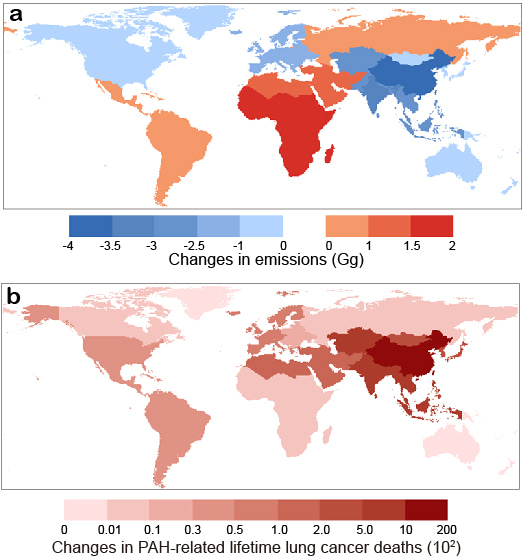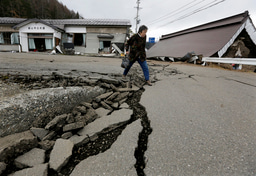Global trade drives transboundary transfer of the health impacts of polycyclic aromatic hydrocarbon emissions
Published in Earth & Environment

Outdoor air pollution and its associated health impacts have been regarded as important global concerns. As one of the most toxic persistent organic compound groups, polycyclic aromatic hydrocarbons (PAHs) have been proved to be mutagenic, carcinogenic, and teratogenic, and have negative effects on the immune system development, host resistance, and humoral immunity, even at low exposure levels. Due to their widespread occurrence and toxic effects on ecological safety and human health, there is an urgent need to prevent the health burden of PAH exposure through the development of global mitigation strategies.
Most atmospheric PAH emissions originate as a byproduct of combustions in various economic activities 1. Over the last few decades, worldwide economic sectors have been connected by globalization and international trade, boosting global economic growth. However, international trade redistributes emissions related to the production of goods and services and subsequently affects global air pollution and associated health impacts. Therefore, the PAH outdoor exposure is no longer a regional problem, but a global concern due to the long-distance atmospheric pollutant transport and redistributing emissions derived from international trade 2,3. Although the international trade-derived emissions of CO2 and PM2.5 and associated adverse health effects have been reported 3,4, the global PAH emissions and transboundary health impacts attributed to the international trade are still largely unknown. The current separation between PAH pollution and the supply chain can greatly undermine local efforts on mitigating emissions and related health impacts in the world.
To address this problem, this study applied an integrated framework to investigate the contributions of driving forces to the PAH emissions and health impacts from whole stages of the economic supply chain. The global PAH emission inventories were generated in this study based on the data of emission factors, fuel consumption, and industrial processes. The environmentally extended multi-regional input-output (EE-MRIO) model allows for emitted emissions to be tied to each region’s investment, final sales, and consumer purchasing behaviors. GEOS-Chem chemical transport model was applied to simulate the global ground-level PAH concentrations. The lifetime lung cancer risk was estimated according to the simulated scenarios-specific concentrations and the Global Burden of Disease (GBD) database. Finally, the contributions of different drivers to the temporal changes in the emissions and health impacts were quantified by combining structural decomposition analysis (SDA) with the above models. The results of this study can assist policy decisions to optimize mitigation strategies from different perspectives of economic supply chains for effectively reducing PAH emissions and health impacts in the world.
We find that in 2015, global anthropogenic PAH emissions were 304 Gg (95% CI: 213~421 Gg) and estimated related lifetime lung cancer deaths were 6.9×104 (95% CI: 1.8×104~1.5×105 deaths). Although the global emissions decreased from 2012 to 2015, the PAH-related lifetime lung cancer deaths increased greatly. The role of trade in driving the PAH-related health risks was greater than that in driving the emissions. The increase in health impacts was driven by the decline in energy efficiency, international trade structure and meteorological change, while improvement of emission factors led to the decrease in emissions and health impacts. Our findings indicate that international cooperation is needed to optimise the global supply chains and mitigate PAH emissions and health impacts.

Follow the Topic
-
Communications Earth & Environment

An open access journal from Nature Portfolio that publishes high-quality research, reviews and commentary in the Earth, environmental and planetary sciences.
Related Collections
With Collections, you can get published faster and increase your visibility.
Geology of the Moon
Publishing Model: Hybrid
Deadline: Jan 31, 2026
Drought
Publishing Model: Hybrid
Deadline: Dec 31, 2025




Please sign in or register for FREE
If you are a registered user on Research Communities by Springer Nature, please sign in